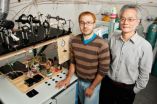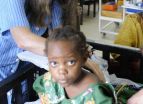International discussions on FRAX smooth the way for implementation in clinical practice
2010-11-17
(Press-News.org) Three days of critical international discussion and debate, led by a panel of experts from the International Society of Clinical Densitometry (ISCD) and the International Osteoporosis Foundation (IOF), have served to clarify a number of important questions pertaining to the interpretation and use of FRAX® in clinical practice.
The WHO Fracture Risk Assessment Tool (FRAX®), with models for some 26 countries, is an important new online tool that is being used by a steadily increasing number of physicians around the world. FRAX® is country-specific and calculates a patient's 10-year probability of fracture based on scientifically validated risk factors, with or without the input of Bone Mineral Density (BMD) values. Previously, doctors tended to rely primarily on BMD values in making treatment decisions.
The ISCD-IOF FRAX® Initiative Conference, which closed in Bucharest on November 13, 2010, provided a timely forum for critical discussion and debate. The outcomes will be reflected in comprehensive educational documents designed to assist healthcare providers in integrating FRAX® into their daily practice.
"This joint initiative with ISCD has served to clarify a number of important questions pertaining to the application of FRAX® in patient care. The discussions have provided a sound platform for the evidence-based use of the FRAX® tool in the prevention of osteoporotic fractures worldwide," said Professor Cyrus Cooper, chair of the IOF Committee of Scientific Advisors and co-chair of the Bucharest conference.
As a developer of the tool at the University of Sheffield in the U.K., Professor Eugene McCloskey stated, "It's been an incredibly useful meeting. The educational component has been excellent and the whole exercise has helped to improve people's understanding of FRAX® and its interpretation in clinical practice."
"It has been a nonstop marathon of high level scientific and clinical discussions carried out in a professional and good spirit. These three days were preceded by twelve months of hard work by more than 50 osteoporosis and epidemiology experts from around the world. We have clearly made a significant step forward in the interpretation and use of the FRAX® tool for clinical practitioners and have outlined avenues of future improvements," said PD Dr. Didier Hans, president of the International Society of Clinical Densitometry and chair of the Bucharest conference.
###
About FRAX®
The ultimate aim of the clinician in the management of osteoporosis should be to reduce the risk of fractures. Treatment decisions must be made through good clinical judgment and through improved identification of patients at high risk. FRAX® is a simple web-tool that integrates clinical information in a quantitative manner to predict a 10-year probability of major osteoporotic fracture for both women and men in different countries. Developed at the World Health Organization Collaborating Centre for Metabolic Bone Diseases, University of Sheffield, UK, the tool assists primary health care providers to better target people in need of intervention, improving the allocation of healthcare resources towards patients most likely to benefit from treatment. The tool can be accessed free of charge at http://www.shef.ac.uk/FRAX/ or via iPhone Application.
About IOF
The International Osteoporosis Foundation (IOF) is a non profit, nongovernmental umbrella organization dedicated to the worldwide fight against osteoporosis, the disease known as "the silent epidemic". IOF's members – committees of scientific researchers, patient, medical and research societies and industry representatives from around the world – share a common vision of a world without osteoporotic fractures. IOF now represents 195 societies in 93 locations. http://www.iofbonehealth.org
About ISCD
The International Society for Clinical Densitometry (ISCD) is an international nonprofit professional society linking multiple disciplines with an interest in bone mass measurement and assessment of skeletal integrity. ISCD's mission is to
Advance Excellence in Skeletal Health Assessment by: Promoting education and a broader understanding of the clinical applications of bone mass measurement and other skeletal health assessment technologies; Assuring proficiency and quality in the assessment of skeletal health through certification and accreditation; Supporting clinical and scientific advances in the diagnosis and treatment of osteoporosis; and, Promoting appropriate patient access to bone mass measurement and other skeletal health assessment technologies. http://www.iscd.org/
END
ELSE PRESS RELEASES FROM THIS DATE:
2010-11-17
Strokes, seizures and other neurological complications related to heart surgery account for "considerable morbidity and mortality," Loyola University Health System neurologists report in the November issue of the journal Hospital Practice.
Other complications include delirium, central nervous system infections, pituitary gland problems, spinal cord or peripheral nerve injuries, residual effects of anesthesia and medication toxicity.
Complications can involve any part of the central and peripheral nervous systems. "Neurologic complications are always a risk with cardiac ...
2010-11-17
University of Alberta research has discovered a strong link between depression and risky sexual behaviours such as improper condom use, transactional sex and relationship violence among young people in South Africa.
The research shows that depression is common among young South Africans, and could be making a significant contribution towards the HIV epidemic.
As well, the researchers believe that depression could be contributing to risky sexual behaviours around the world, and that preventing or treating it may reduce the global burden of sexually transmitted diseases, ...
2010-11-17
November 16, 2010 -- Scientists who study acoustics (the "science of sound") have over the years developed a variety of techniques to probe the hidden depths of oceans. This week, many of these acoustic researchers will come together to discuss how these technologies were used to monitor April's Deepwater Horizon oil spill, to present new data on the gusher's ecological impacts, and to highlight new techniques under development that could improve our ability to detect oil in ocean water.
This special session will take place on November 17, 2010 at the 2nd Pan-American/Iberian ...
2010-11-17
By examining the distinct wave patterns formed from complex biochemical reactions within the human body, diseased organs may be more effectively identified, says Zhengdong Cheng, associate professor in the Artie McFerrin Department of Chemical Engineering at Texas A&M University, who has developed a model that simulates how these wave patterns are generated.
His findings, which appear in the October issue of the journal "Physical Review E," detail Cheng's work with a system designed to model cells in a biochemical environment, similar to what occurs inside the human body.
His ...
2010-11-17
CHAMPAIGN, Ill. — According to a popular hypothesis, grasses such as maize, sugar cane, millet and sorghum got their evolutionary start as a result of a steep drop in atmospheric carbon dioxide levels during the Oligocene epoch, more than 23 million years ago. A new study overturns that hypothesis, presenting the first geological evidence that the ancestors of these and other C4 grasses emerged millions of years earlier than previously established.
The findings are published in the journal Geology.
C4 plants are more efficient than C3 plants at taking up atmospheric ...
2010-11-17
Two new studies have shown that a unique program in East Harlem that helps middle school students learn practical health skills and gain a better understanding of medical conditions, such as diabetes and hypertension, resulted in increased interest in college attendance and medical careers among the students who attended the program. The results were presented at the American Public Health Association (APHA) Annual Meeting this month in Denver.
The MedStart Summer Enrichment Program was created in the summer of 2009 by Edward Chu and Melissa Schneiderman, two third-year ...
2010-11-17
EAST LANSING, Mich. — Almost a third of cerebral malaria survivors developed epilepsy or other behavioral disorders in the most comprehensive study to date of the disease in African children, solidifying the link between malaria and neuropsychiatric disorders that affect hundreds of thousands of children.
The research – led by Gretchen Birbeck, an associate professor of neurology and ophthalmology in Michigan State University's College of Osteopathic Medicine – appears in the current edition of The Lancet Neurology.
Cerebral malaria is a severe form of malaria affecting ...
2010-11-17
Using particles that are 1/100,000 the width of a human hair to deliver drugs to cells or assist plants in fighting off pests may sound like something out of a science fiction movie, but these scenarios may be a common occurrence in the near future.
Carbon nanotubes, cylindrically shaped carbon molecules with a diameter of about 1 nanometer, have many potential applications in a variety of fields, such as biomedical engineering and medical chemistry. Proteins, nucleic acids, and drugs can be attached to these nanotubes and delivered to cells and organs. Carbon nanotubes ...
2010-11-17
BERKELEY, Calif.—The Department of Energy's National Energy Research Scientific Computing Center (NERSC), already one of the world's leading centers for scientific productivity, is now home to the fifth most powerful supercomputer in the world and the second most powerful in the United States, according to the latest edition of the TOP500 list, the definitive ranking of the world's top computers.
NERSC's newest supercomputer, a 153,408 processor-core Cray XE6 system, posted a performance of 1.05 petaflops (quadrillions of calculations per second) running the Linpack benchmark. ...
2010-11-17
With the help of babies and more than 5,000 of their diapers, Emory University researchers have developed an accurate, noninvasive method to determine estrogen levels in infants.
The method, previously used in nonhuman primates, will allow researchers to learn more about the association between estrogen levels in human infants and their long-term reproductive development as well as the development of sex-specific behaviors, such as toy preference or cognitive differences. What's more, the method will also allow researchers to look at how early disruption of the endocrine ...
LAST 30 PRESS RELEASES:
[Press-News.org] International discussions on FRAX smooth the way for implementation in clinical practice


